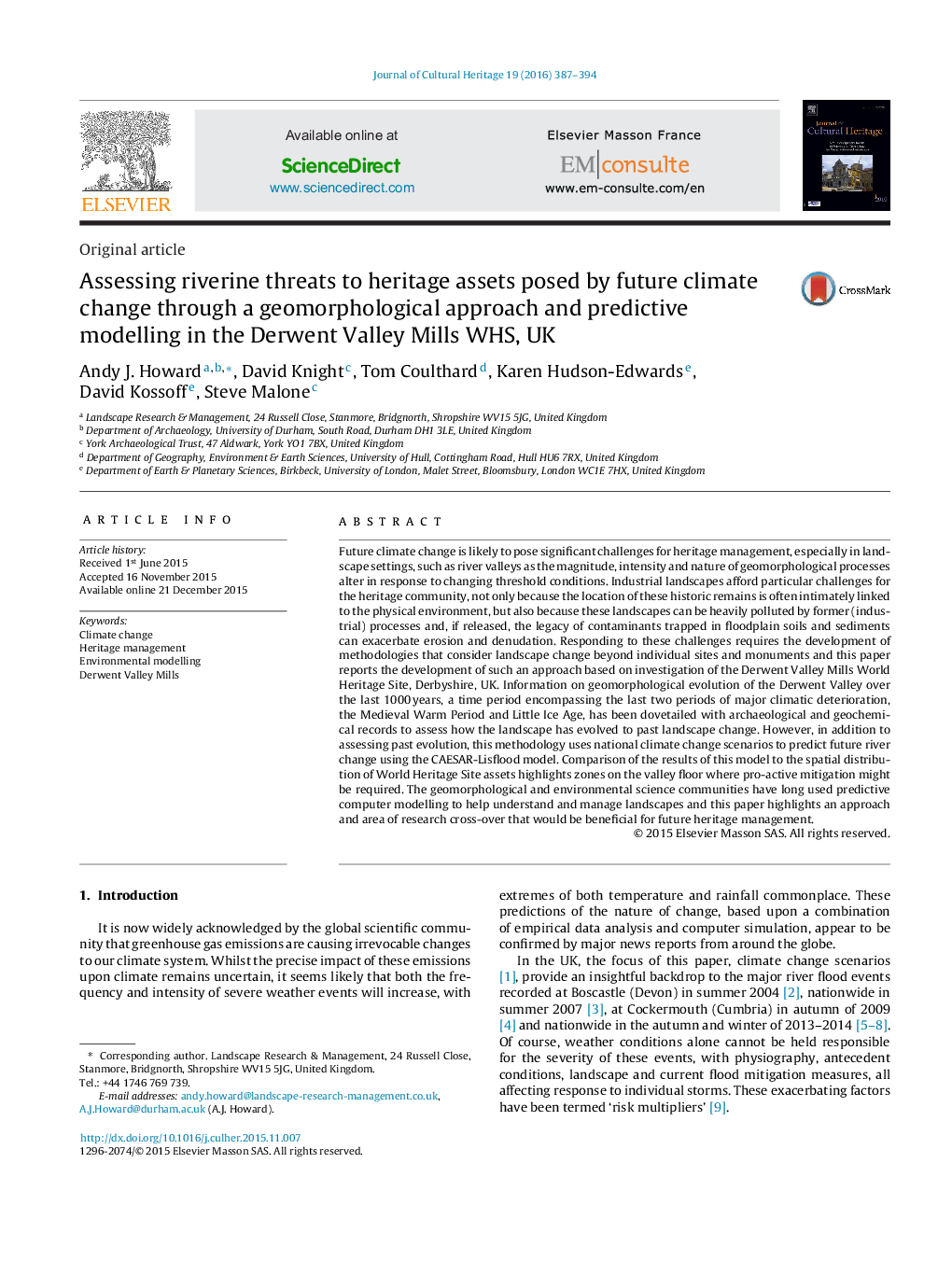| کد مقاله | کد نشریه | سال انتشار | مقاله انگلیسی | نسخه تمام متن |
|---|---|---|---|---|
| 1037861 | 1483957 | 2016 | 8 صفحه PDF | دانلود رایگان |
Future climate change is likely to pose significant challenges for heritage management, especially in landscape settings, such as river valleys as the magnitude, intensity and nature of geomorphological processes alter in response to changing threshold conditions. Industrial landscapes afford particular challenges for the heritage community, not only because the location of these historic remains is often intimately linked to the physical environment, but also because these landscapes can be heavily polluted by former (industrial) processes and, if released, the legacy of contaminants trapped in floodplain soils and sediments can exacerbate erosion and denudation. Responding to these challenges requires the development of methodologies that consider landscape change beyond individual sites and monuments and this paper reports the development of such an approach based on investigation of the Derwent Valley Mills World Heritage Site, Derbyshire, UK. Information on geomorphological evolution of the Derwent Valley over the last 1000 years, a time period encompassing the last two periods of major climatic deterioration, the Medieval Warm Period and Little Ice Age, has been dovetailed with archaeological and geochemical records to assess how the landscape has evolved to past landscape change. However, in addition to assessing past evolution, this methodology uses national climate change scenarios to predict future river change using the CAESAR-Lisflood model. Comparison of the results of this model to the spatial distribution of World Heritage Site assets highlights zones on the valley floor where pro-active mitigation might be required. The geomorphological and environmental science communities have long used predictive computer modelling to help understand and manage landscapes and this paper highlights an approach and area of research cross-over that would be beneficial for future heritage management.
Journal: Journal of Cultural Heritage - Volume 19, May–June 2016, Pages 387–394
